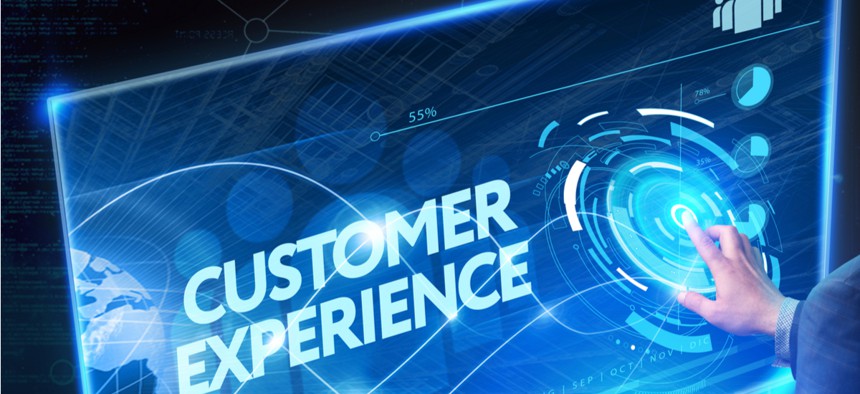How to Drive Federal IT Performance Using Customer Experience

Den Rise/Shutterstock.com
Federal employees have a customer story too, and federal CIOs and IT need to listen to them.
The reality is that most federal IT leaders are under increased scrutiny to deliver increased value and productivity from technology investments at the lowest cost. Simply performing a top-to-bottom technology rationalization effort will no longer make their organization instantly lean and agile.
Let’s level-set the conversation: Most federal agencies are struggling to create value—namely due to increasing levels of technology debt, data locked in disparate systems, an inside-out culture, and organizational inertia. Add in the accelerating changes in citizen expectations and you face the proverbial mountain to climb.
Time for a New Paradigm
A shift in mindset is required to find a new path out of this technology trap. In our conversations with federal IT leaders, we hear time and again the desire to reimagine how their technology organization can fuel mission success. These leaders recognize that allowing poor relations to persist between IT and federal programs is a dangerous practice. When federal employees become frustrated with IT, the security and efficiency of technology across the organization can be compromised. Business partners and industry will invest around you, data will flourish in silos, and shadow IT will reduce efficiency.
In the age of the customer, leading federal agencies focus on delivering employee experiences that enable them to serve citizens in ways that drive compliance, efficacy, and advocacy. In fact, Forrester surveys tens of thousands of customers each year about their experience interacting with public and private-sector organizations to create its Customer Experience Index. Our research demonstrates that strong CX leads to higher loyalty and advocacy, but CX is an equally powerful tool for improving how employees—internal customers—perceive and interact with the tech organization.
Use the Principle of CX to Improve the Service You Provide and Your Standing in the Agency
Your greatest transformational lever isn’t technology: It’s people. Across your agency, your employees have experiences that drive whether and how they choose to work with IT. You can change those experiences by applying customer experience design methodologies to design, implement, and manage these interactions across all touchpoints of the internal customer journey and life cycle. The underlying principle guiding this strategy is a shift toward outside-in design, wherein actual customer input is the foremost driver of change.
Big picture, we are seeing CIOs being successful by reimagining the IT/employee dynamic with the goal to deliver to the mission and empower users. This approach entails taking a few key steps:
- Develop a deeper understanding of customers’, internal stakeholders’, and partners’ wants and needs and new ways to create value. Use this to co-create a refined vision with your customers and employees.
- Deploy customer experience design tools that consider the personas you serve, the journeys employees take when they engage IT, and specific “moments that matter” that are paramount in delivering the mission.
- Understand and diagnose the ecosystem in which IT interactions take place to grasp the impact of key decisions and whether they are for the greater good, recognizing that no employee or interaction operates in isolation—our point perceptions are the sum of accumulated experiences.
Pivoting to a “CX for IT” mindset resets common assumptions about where to look for performance improvements and the role of the CIO and IT team. This approach provides a keener understanding of how federal IT systems and processes should engage federal employees and helps identify where your ecosystem is limiting your organization’s potential. Adopting an outside-in mindset helps ensure a customer-centric approach to design and delivery of technology services. By mitigating tech pain points with strategies like CX for IT, federal CIOs are empowering employees across their organization to work more quickly and efficiently, increasing both productivity and job satisfaction while demonstrating the high level of service their agency seeks to provide external customers (citizens). This creates the opportunity for CIOs to show how, in addition to leading the technology agenda, they are also helping lead the people agenda.
Matt Guarini is the vice president and research director at Forrester. On May 31, Forrester hosts government leaders and company experts at CXDC 2018 in Washington, D.C.
NEXT STORY: How to Connect Cyber Investment to Outcomes





